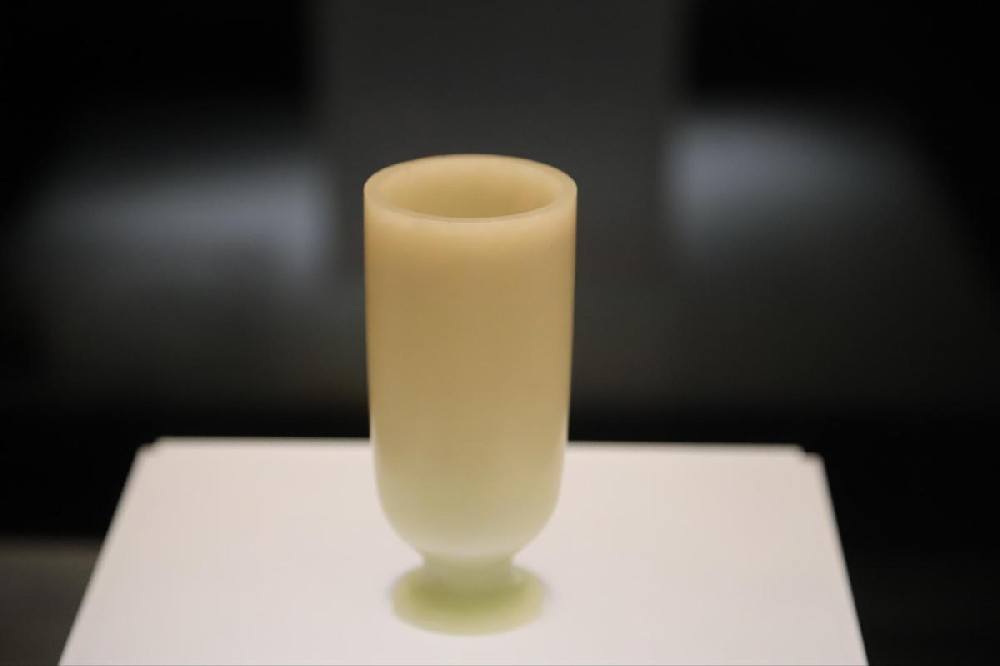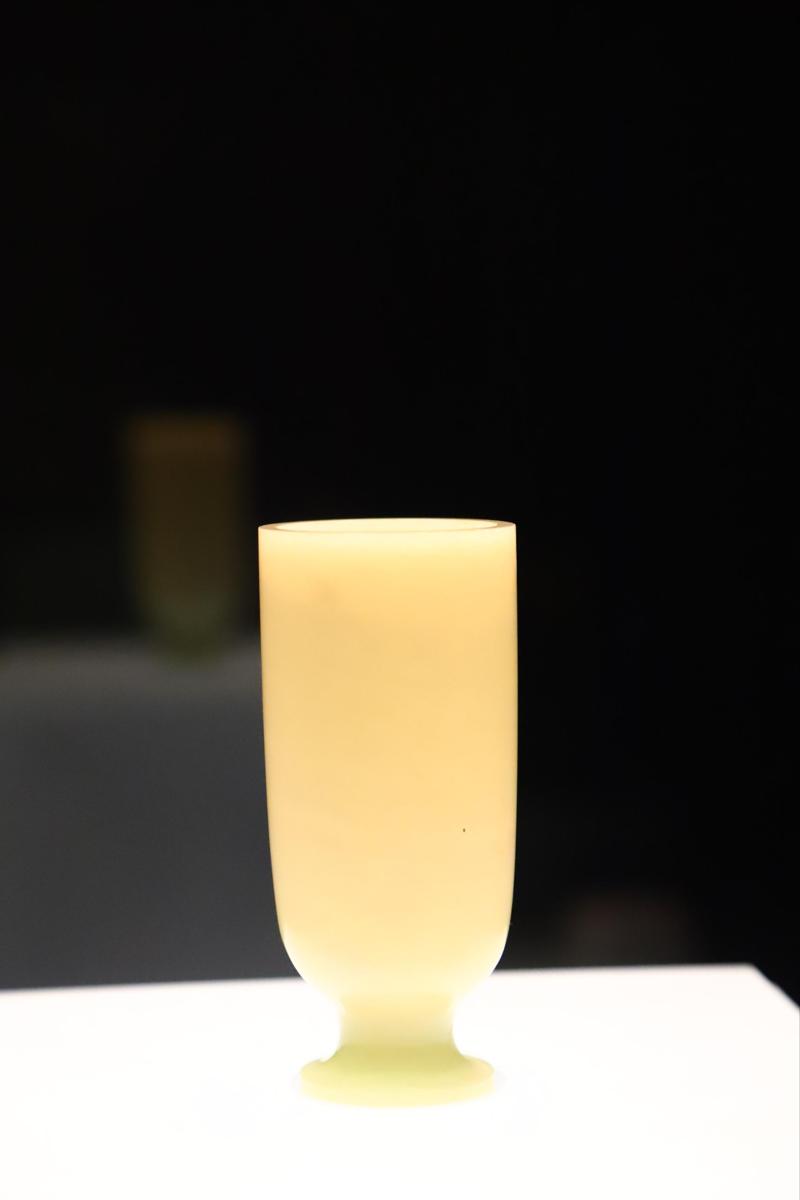Elegant jade goblet wows visitors at museum in Henan

Dating to the Three Kingdoms period (220-280), a jade goblet stuns visitors with its streamlined curves and unblemished appearance at the Luoyang Museum, Henan province. [Photo provided to chinadaily.com.cn]
In the hallowed halls at the Luoyang Museum in Henan province, a jade goblet —alluded to in ancient Chinese poet Li Bai's verses — graces the eyes of visitors.
Standing at a height of 13 centimeters with a diameter of 5 centimeters, the white jade artifact features a cylindrical body with a rounded cake-shaped base. Its meticulously carved design reflects the profound influence of the craftsmanship of the Han Dynasty (206 BC-AD 220). With its graceful and smooth curves and unblemished appearance, the cup, which is crafted from the finest Xinjiang Hetian Yangzhi jade, emanates an aura of purity and elegance.
The cup was unearthed in 1956 from a tomb of the Wei state during the Three Kingdoms period (220-280), with a year marking of AD 247 — a rare example of a time record. It was believed to be an essential drinking vessel used by the tomb's owner during his or her lifetime.
In ancient times, jade was revered as the embodiment of the sun and moon's essence, as well as the convergence of the spiritual energies of heaven and earth.
During the pre-Qin and Han dynasties, jade objects were extensively used in rituals, such as funerals. However, as the turbulent Three Kingdoms period ensued, society embraced a simpler approach to burial practices, and jade artifacts gradually became rarities within the tombs.

Dating to the Three Kingdoms period (220-280), a jade goblet stuns visitors with its streamlined curves and unblemished appearance at the Luoyang Museum, Henan province. [Photo provided to chinadaily.com.cn]
Related articles
-
 Fan exhibition blows away boundaries between East and West
Fan exhibition blows away boundaries between East and WestMore
-
 The smell of success
The smell of successMore
-
 Stylists weave together Chinese and Italian designs
Stylists weave together Chinese and Italian designsMore
-
 Weaving classic craft into modern items
Weaving classic craft into modern itemsMore
-
 Pic story: inheritor of Tanmujiang wooden comb carving craft
Pic story: inheritor of Tanmujiang wooden comb carving craftMore
-
 The magical double-sided embroidery of Suzhou embroidery: one side, one world
The magical double-sided embroidery of Suzhou embroidery: one side, one worldMore
